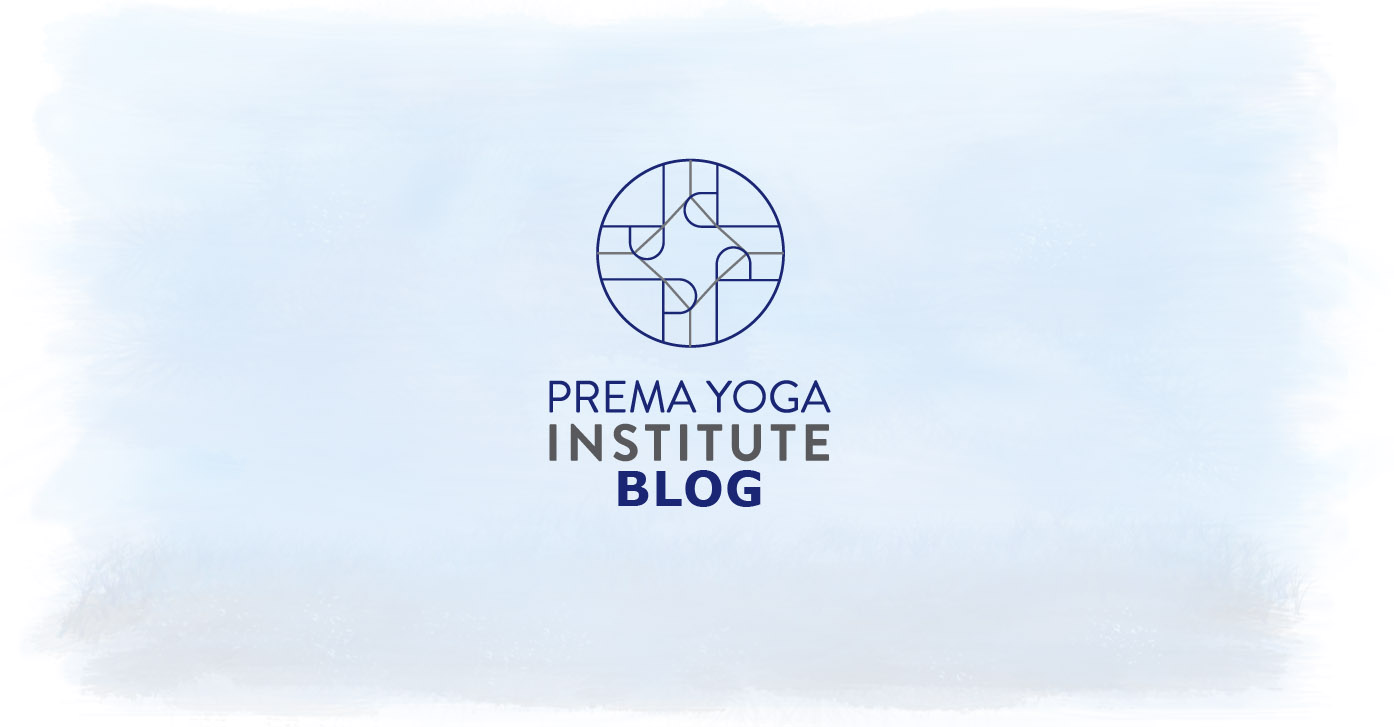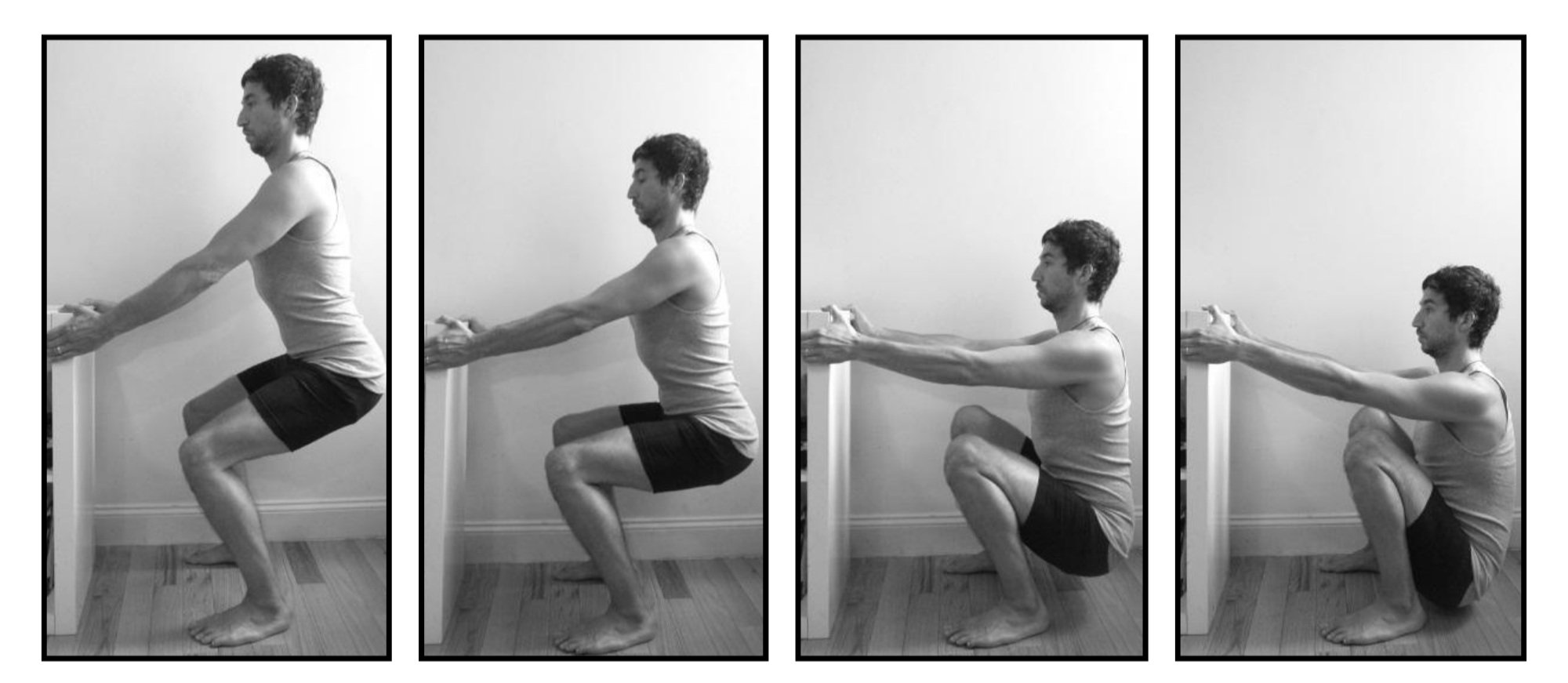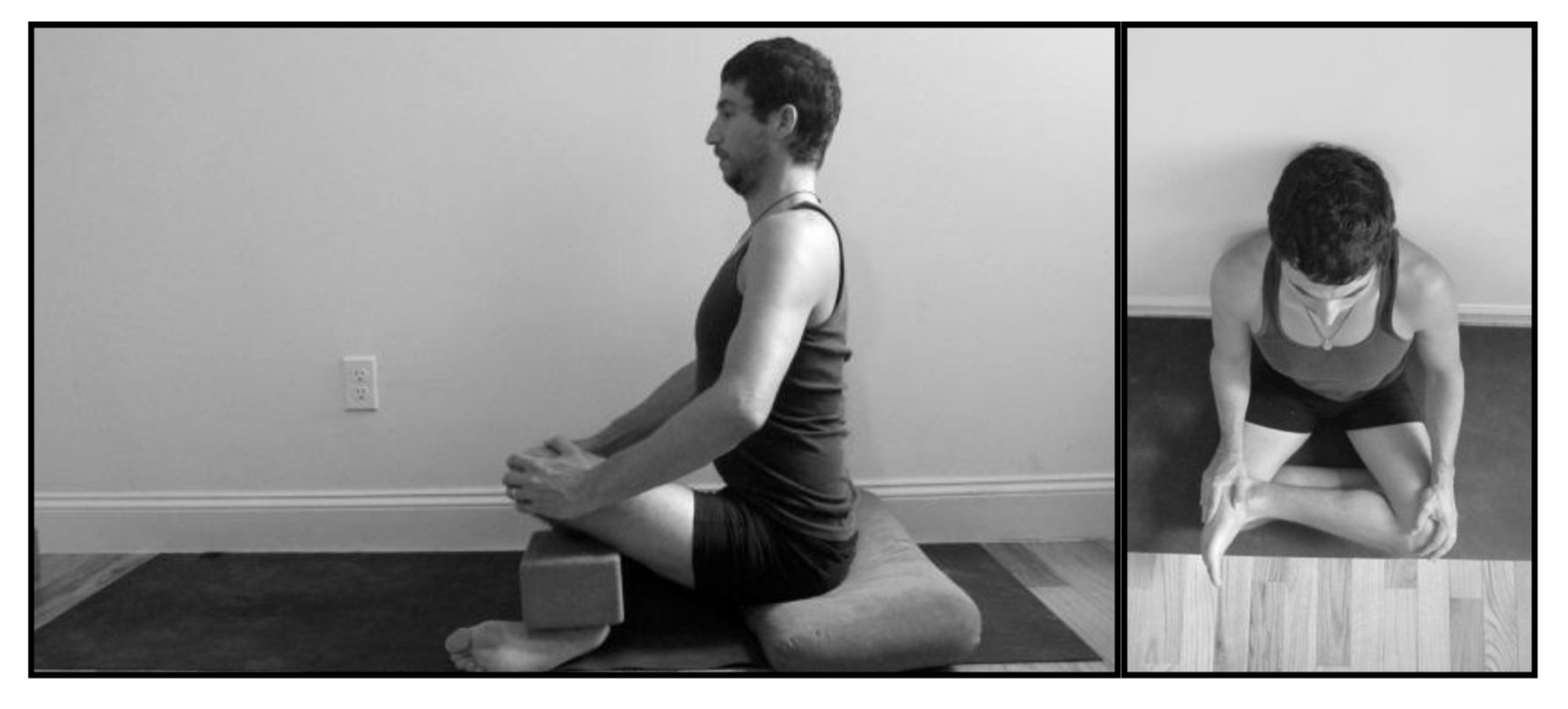
Introduction to Therapeutic Yoga for the Knee
Are you curious about how yoga can help manage knee pain and what it takes to become a skilled yoga instructor or yoga therapist capable of guiding others through this journey? This blog delves into the relationship between yoga and knee health, emphasizing the critical role of yoga instructor training and yoga accreditation in fostering effective, safe practices.
Understanding Knee Pain and Its Misconceptions
Knee pain is a common affliction, often misunderstood and mistreated. Pete Egoscue, a renowned pain therapist, highlights that pain experienced in one area, like the knee, might originate from imbalances elsewhere in the body. This insight is particularly relevant to yoga practice, where understanding the body’s kinetic chain is crucial. For aspiring yoga instructors and yoga therapists, grasping these fundamentals is a stepping stone towards an effective yoga practice.
The Role of Hatha Yoga in Addressing Knee Limitations
Hatha Yoga, known for its comprehensive engagement of the entire body, proves particularly beneficial for knee health. When practicing poses like Child’s Pose, Hero Pose, and Head to Knee Pose, limitations and pain in the knee often surface. This discomfort is typically due to two primary factors: improper knee tracking and insufficient space behind the knee. These issues stem from inflexibility in the hamstrings or quadriceps and can lead to misalignment and pain, potentially damaging the medial meniscus or knee ligaments.
Importance of Proper Training for Yoga Instructors
For those pursuing RYT 500 teacher training, it’s important you understand these nuances. Why? For example, classical sun salutations (coming through anjaneāsana in transition from uttanāsana to adho mukha svanāsana) are instrumental in lengthening the quadriceps and hamstrings, promoting knee flexibility and health. However, extreme angles require careful support to avoid injury. Techniques like using a towel or blanket in Hero’s Pose help create the necessary space and reduce pressure, demonstrating the kind of knowledge expected from a certified yoga instructor.
Tailoring Yoga Practices to Common Knee Conditions
Addressing common knee conditions, such as a torn meniscus and various forms of arthritis, requires a tailored approach. Yoga professionals - especially those with a yoga therapy certification - are trained to observe and adapt to each student’s unique needs. In the context of knee pain, building supporting muscle groups through classical standing poses like Warrior 2 and trikoṇāsana is essential. These asanas, when executed correctly, can effectively build knee strength without exceeding a 90-degree angle.
Yoga Poses for Enhancing Knee Flexibility and Health
In addition to understanding the complexities of knee pain and the importance of yoga teacher training, it’s essential to know specific poses that can promote knee health. These poses are designed to enhance flexibility and support the overall well-being of the knees.
Assisted Squat A for Range of Motion
Start with feet wider than hips, toes slightly turned out. This stance helps in distributing weight evenly and ensures proper alignment.
Holding onto a stable object that won’t move during the squat is crucial. This support assists in maintaining balance and alignment.
This squat primarily focuses on building range of motion rather than strength, making it ideal for enhancing knee flexibility.
The squat engages the joints of the ankles, knees, hips, and spine, offering a comprehensive lower body workout.
If there’s an issue in the lower body, using the arms to hold onto something helps lighten the load, reducing strain on the knees.
Assisted Squat with Blanket Prop for Gentle Progression
Achieving a full squat, down to the heels, isn’t essential initially. Aiming for a 90-degree angle is a suitable starting point.
If experiencing discomfort, the student can rise slightly above the pain point. Gradually, one can work towards deepening the squat beyond the troublesome angle.
Placing a towel behind the knee can be helpful, especially if one struggles to move past a 90-degree angle. This prop reduces pressure in the knee, allowing for a more comfortable experience.
Assisted Squat B for Strength and Stability
Start with feet wider than hips and toes turned slightly outward, similar to Assisted Squat A.
Stand close to a wall, using a 20-pound weight for additional stability (more weight can be used depending on the student’s size). The wall serves as a corrective measure, preventing leaning too far forward and protecting the knees.
This technique is tailored to build both range of motion and overall strength in the body.
In this variation, the squat doesn’t go past 90 degrees, ensuring safety and comfort for the knees.
The weight acts as a counterbalance to the buttocks, aiding in achieving better balance. This method is particularly effective for individuals with longer legs, as it provides extra support and alignment.
The Bottom Line
As we navigate the path of yoga, it’s essential to remember that each individual’s journey is unique, requiring a personalized and compassionate approach to teaching and practice. Yoga therapy accreditation and therapeutic yoga teacher training play a pivotal role in this journey, providing the foundational knowledge and practical skills necessary to address diverse needs, especially in managing conditions like knee pain.
By understanding the mechanics of the knee, the role of alignment and flexibility, and the power of individualized instruction, future yoga instructors can become adept at guiding their students towards better health and well-being.
Are you a yoga teacher ready to take your teaching to the next level? Discover slow flow yoga and more in our annual training Prema Therapeutics Essentials with Jon Witt, C-IAYT, Dana Slamp, C-IAYT, Dr. Loren Fishman and more. This 100-hour online course counts towards a RYT 500 Teacher Training with Yoga Alliance AND your Yoga Therapy Certification with IAYT simultaneously. Call us at Prema Yoga Institute and advance your yoga teaching career today!
About Jon Witt
Jon Witt is a certified Yoga Therapist and Teacher and the co-lead faculty of Prema Yoga Therapeutics Essentials at PYI. He's a C-IAYT and E-RYT500-certified Senior Therapeutics Teacher, trained in Atmavikas Yoga Therapy in India and transitioned to yoga after a decade in competitive wrestling. Jon is a former Pure Yoga instructor in Hong Kong and has studied with renowned teachers like Dharma Mittra, Anthony Carlisi, and Baron Baptiste. Jon now teaches various styles including Yoga Therapy and Vinyasa in New York.
Introduction to Therapeutic Yoga for the Feet
Our feet and ankles play a vital role in our daily lives, supporting our body weight and allowing us to move with grace and ease. But, for many of us, the health and functionality of our feet are compromised due to factors like poor biomechanics, obesity, or the habitual use of high heels. These issues can lead to limitations in our yoga practice and even result in conditions such as peripheral neuropathy, plantar fasciitis, osteoarthritis, and bunions.
In this article, we will explore the importance of maintaining healthy feet and how therapeutic yoga can help address these challenges.
The Importance of Healthy Feet in Yoga
Before teaching yoga, instructors must first understand the biomechanics of the feet and ankles. The average person often has deficiencies in both strength and flexibility in these areas, leading to issues like poor balance and compromised poses.
Warrior 1-2 and Trikoṇāsana are examples of yoga poses that can reveal limitations in the feet and ankles. These limitations can hinder the proper execution of these asanas and may lead to tendonitis or other discomforts. It’s essential to address these limitations and help practitioners regain their foot and ankle flexibility.
The Anatomy of Foot Movement
The human foot and ankle are marvels of engineering, comprising 28 bones and 25 joints that allow for a wide range of motion. To facilitate this movement, various muscle groups come into play, responsible for actions such as dorsiflexion, plantarflexion, inversion (adduction), and eversion (abduction). These movements are essential for maintaining balance and mobility in yoga and daily activities.
One of the key takeaways here is that the health of our feet goes beyond aesthetics; it affects our overall physical well-being. This is where therapeutic yoga can make a significant impact by addressing limitations and promoting flexibility and strength in the feet.
Common Foot Conditions and How Yoga Helps
Peripheral Neuropathy. Peripheral neuropathy, often associated with diabetes, can cause numbness, tingling, and balance issues. Yoga, combined with specific foot exercises, can alleviate chronic symptoms by improving circulation and nerve function.
Plantar Fasciitis. This painful condition involves inflammation in the plantar fascia ligament on the underside of the foot. Yoga can help by stretching and strengthening the muscles and tissues in the feet, reducing tension on the plantar fascia.
Osteoarthritis of the Feet. Age and wear and tear can lead to joint pain and deformities in the feet. Yoga poses that encourage joint mobility and strength can provide relief and improve overall foot health.
Bunions (Hallux Valgus). Bunions can be caused by heredity or ill-fitting footwear and may result in pain and deformity of the big toe. Yoga can help by improving toe flexibility and strengthening the muscles that support the arch of the foot.
Yoga Poses for Foot Health
Vīrabhadrāsana I-II (Warrior 1-2)
These poses build balance, strength, and flexibility in the feet while challenging your body.
Utthita Trikoṇāsana (Extended Triangle)
This pose demands flexibility through the entire body, making it an excellent choice for improving overall foot health.
Vṛksāsana (Tree Pose)
Balancing poses with the support of a wall can help train proper balance on one foot, enhancing foot stability.
Bālāsana (Child’s Pose)
Child’s Pose can be more challenging for those with foot, ankle, or knee issues. Using props like blankets can make this pose accessible and beneficial.
Supta Pādāṅguṣṭhāsana (Reclined Extended Leg Pose) with Strap
This non-weight-bearing pose is great for restoring balance to the feet and improving flexibility.
Additional Exercises for Foot Health
Interlacing fingers between toes to improve toe alignment.
Using a ball to roll and release tension in the feet, aiding in conditions like plantar fasciitis and bunions.
Calf stretches to restore strength and flexibility to the feet and correct poor posture.
Foot circles, pointing, and flexing exercises to test and improve foot and ankle mobility.
The Bottom Line
Incorporating therapeutic yoga practices into your daily routine can have a significant impact on the health and functionality of your feet. Beyond enhancing your yoga practice, it can also alleviate common foot conditions and improve your overall well-being.
Aspiring yoga instructors and those seeking yoga accreditation should consider the importance of foot health and its connection to the rest of the body. By nurturing our feet, we can take significant steps toward a healthier, more balanced life. Whether you aim to become a yoga instructor or simply want to enjoy a pain-free yoga practice, remember that a solid foundation starts with healthy feet.
Are you a yoga teacher ready to take your teaching to the next level? Discover slow flow yoga and more in our annual training Prema Therapeutics Essentials with Jon Witt, C-IAYT, Dana Slamp, C-IAYT, Dr. Loren Fishman and more. This 100-hour online course counts towards a RYT 500 Teacher Training with Yoga Alliance AND your Yoga Therapy Certification with IAYT simultaneously. Call us at Prema Yoga Institute and advance your yoga teaching career today!
About Jon Witt
Jon Witt is a certified Yoga Therapist and Teacher and the co-lead faculty of Prema Yoga Therapeutics Essentials at PYI. He's a C-IAYT and E-RYT500-certified Senior Therapeutics Teacher, trained in Atmavikas Yoga Therapy in India and transitioned to yoga after a decade in competitive wrestling. Jon is a former Pure Yoga instructor in Hong Kong and has studied with renowned teachers like Dharma Mittra, Anthony Carlisi, and Baron Baptiste. Jon now teaches various styles including Yoga Therapy and Vinyasa in New York.
Introduction to Therapeutic Yoga for the Hips
Have you ever considered how the alignment of your pelvis impacts your overall health and mobility? This question is particularly relevant for those aspiring to become yoga instructors or those interested in yoga accreditation. Understanding the pelvic structure and its functions is crucial for effective yoga practice. After all, the hip and pelvis, with their unique composition of bones, connect the lower extremities to the spine’s base (sacrum), enabling upright stance and free movement.
The Consequences of Pelvic Misalignment
Pelvic misalignment can cause body imbalances, affecting movements like walking and running. This misalignment, often seen in older adults, leads to poor mechanics and harmful compensatory movements, potentially resulting in hip or knee replacements.
Understanding the Causes of Pelvic Issues
But, why does this happen? Pelvic issues often arise from aging, but premature dysfunction in middle-aged individuals is concerning. It can stem from loss of muscle around the pelvis or tight supporting muscles, causing compensatory movements and leading to conditions like arthritis, and sometimes necessitating joint replacement.
The Role of Yoga in Promoting Hip Mobility
Most individuals, except those regularly practicing yoga, dancing, or martial arts, do not move their hips through their full range of motion, including flexion, extension, and rotations. This lack of movement can lead to the issues mentioned earlier. However, there are yoga poses that can significantly improve hip and pelvis health, ensuring flexibility and preventing future complications.
Yoga Poses for Hip and Pelvis Health
The health of our hips and pelvis is vital for mobility, stability, and overall well-being. Yoga offers a range of poses specifically designed to enhance the flexibility, strength, and alignment of these crucial areas. Whether you’re a seasoned practitioner or new to yoga, incorporating these poses into your routine can greatly improve hip and pelvic health, offering relief from discomfort and preventing future injuries.
Supta Kapotāsana (Reclined Ankle to Knee/Reclined Pigeon)
Ideal for those who cannot perform a full pigeon pose due to limitations in hip movement.
This pose mobilizes the hip with external rotation, offering a productive variation for those recovering from hip or knee surgery.
Aim to create a 90-degree angle in both legs if possible, and use props to support the hips, lower back, and head for comfort and alignment.
This pose is also a preparatory step for more advanced poses like the Pigeon. Incorporate Warrior 1, 2, and Triangle poses to gauge readiness for Pigeon.
It’s particularly beneficial in restoring health to the lower back and alleviating sciatica.
Swastikāsana (Ankle to Knee/Double Pigeon)
Offers similar benefits in restoring hip mobility as seen in Pigeon and Cow Face poses.
Focuses on teaching external rotation in both hips without imposing rotation on the knees.
Use props under the hips and possibly the knees to ensure proper alignment and reduce strain.
When more demanding poses like Pigeon are not feasible, opt for the Easy-Seated Pose (Sukhāsana) with appropriate props.
Gomukāsana (Cow Face)
A more complex pose that involves stacking the knees while maintaining alignment in the upper body.
Prop the hips with a blanket or bolster to enhance efficiency and safety in the pose.
Effective in releasing the piriformis muscle, thus helping relieve sciatic pain in hips and legs.
This pose can be adapted for chair yoga or performed in a reclined position, starting with one leg straight and the other bent, stacked on the bottom knee.
Supta Pādāṅguṣṭhāsana Variation (Reclined Stretch with Strap)
A good alternative when hip opening poses are not suitable.
Focuses on releasing the calf and hamstrings, thus restoring health to the lower back.
This pose also brings traction into the neck, helping to restore head and neck alignment.
It’s an excellent alternative to more strenuous poses like the plow or shoulder-stand.
Viparītakaraṇī (Legs up the Wall Pose)
Excellent for releasing tension in the legs, hips, and back.
Prop the hips if there’s a gap between the hips and floor to maintain natural spinal curves.
Ideal for individuals who cannot perform forward bends while standing or on the ground.
This pose can be used as an alternative to more challenging inversions, especially when the hips are propped higher than the heart.
By incorporating these specific poses into a yoga routine, individuals can significantly improve their hip and pelvic health. These poses are not only beneficial for aspiring yoga instructors but also for anyone looking to enhance their physical well-being through yoga. Understanding and practicing these poses can be a vital component of yoga instructor training, particularly for those seeking yoga accreditation and aiming to become well-rounded yoga instructors.
The Bottom Line
Therapeutic yoga for the hips is crucial for overall health and mobility. It addresses issues like stiffness and pain, often stemming from sedentary lifestyles or aging. These practices provide a natural approach to improving hip flexibility and function, emphasizing proactive care for long-term well-being.
Whether you’re looking for relief from discomfort or if you’re aiming to enhance your physical capabilities, incorporating these therapeutic yoga practices into your daily routines can lead to significant improvements in hip health and, by extension, your overall quality of life.
Are you a yoga teacher ready to take your teaching to the next level? Discover slow flow yoga and more in our annual training Prema Therapeutics Essentials with Jon Witt, C-IAYT, Dana Slamp, C-IAYT, Dr. Loren Fishman and more. This 100-hour online course counts towards a RYT 500 Teacher Training with Yoga Alliance AND your Yoga Therapy Certification with IAYT simultaneously. Call us at Prema Yoga Institute and advance your yoga teaching career today!
About Jon Witt
Jon Witt is a certified Yoga Therapist and Teacher and the co-lead faculty of Prema Yoga Therapeutics Essentials at PYI. He's a C-IAYT and E-RYT500-certified Senior Therapeutics Teacher, trained in Atmavikas Yoga Therapy in India and transitioned to yoga after a decade in competitive wrestling. Jon is a former Pure Yoga instructor in Hong Kong and has studied with renowned teachers like Dharma Mittra, Anthony Carlisi, and Baron Baptiste. Jon now teaches various styles including Yoga Therapy and Vinyasa in New York.


































